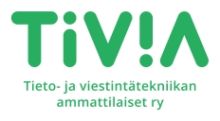How do integrations help you to meet Business Goals?

![]() Do you clearly understand how integrations contribute to achieving your business goals? Nowadays, all services have digital elements, be it a mobile application, or a browser-based user interface, in which integrations come into play as a layer. In my previous blog, I covered one of the use-case examples for it - Integrations – the cornerstone of service digitalization. In this blog, I discuss the topic from the four, more business general perspectives.
Do you clearly understand how integrations contribute to achieving your business goals? Nowadays, all services have digital elements, be it a mobile application, or a browser-based user interface, in which integrations come into play as a layer. In my previous blog, I covered one of the use-case examples for it - Integrations – the cornerstone of service digitalization. In this blog, I discuss the topic from the four, more business general perspectives.
Value for the money
One business management challenge is allocating the available budget wisely and efficiently. Making good prioritization based on available information is one of the sometimes most difficult tasks business owners face. From the integrations point of view, we can consider this from the perspective of A) implementing new and B) operating the existing integrations. Option A should get most of the allocation for budgeting compared to option B.
For streamlining the operations phase, Frends offers, among other things, centralized monitoring that enables faster issue identification and resolution and BPMN-based low-code integration process modeling that enables automated and easily understandable documentation that supports operations and problem-solving. When the operation phase is provided with effective integration platform capabilities, it is easier, more effective, and less time-consuming. Regarding budgeting, you need to allocate less budget for operations, leaving more room for the development budget.
New development may be investing in automation to streamline the process execution and improve customer experience, enabling existing service digitalization by introducing APIs to access relevant data. It can also include extending the lifecycle of legacy solutions to enable solid development and ramp-up of new ones, to give you a couple of examples. Naturally, the business model is the driver for the integration needs.
Read the customer story of Tokmanni, a Finnish retail giant.
Time to market
Time is one resource we say we never have enough of. Limited time as a resource also applies to the business models. The faster you get a new business model into the market, the faster you gain revenue. In addition, the quicker you get the new business model out, the faster you earn information to improve it. It is also a race against the competition, who gets it out first, whose model most appeals to the customers. Nowadays, the digital aspect is included in all business models, and integrations are part of the picture. The easier the integration platform is to use, and the more manageable the integration development is with it, the faster the integration part of the operating model needed is to implement for the business model.
Business continuity
Once you have the business model implemented and the operating model deployed, the goal is to stay on top of things and have visibility across all processes. From the process perspective, end-to-end visibility is critical. It would help if you gained visibility to manage the process as a whole instead of managing it part by part by falling into the trap of sub-optimization.
With your decision to have the complete end-to-end process-related integration and orchestration managed by a centralized integration platform, you will gain visibility to the whole process, what is going on and how it is performing. You control the entire end-to-end process, potentially crossing several business units, ensuring targeted value delivery instead of focusing only on parts of the process in business unit silos.
Frends platform can also provide you with a centralized point for system SLA monitoring. That may enable you to eliminate end-end-of- lifecycle IT solutions, and often costly SLA contracts, reduce costs and simplify SLA monitoring. In addition, the exception handling done by design helps to recover automatically from error situations.
With these, you can swiftly react to inevitable issues and fix the root cause.

Scalability
After running your business model for some time and with success, it takes off: More orders are coming in, and customers are happy with the value and experience they get from your products and services. When the upslope in the S-curve is steep, you want to avoid ending up in a situation where any part of your operating model becomes a bottleneck and slows you down or, in the worst case, stops you. Working integrations are good, and scalable working integrations are even better. But remember that scalability is about more than just adding more hardware. It is also about integration architecture decisions and the design of integration processes. Frends provides support for different integration architectures and ways to scale agent architecture with support for containers. Monitoring and reporting capabilities with BPMN standard-based integration process design enable easy to design for scalability.
See this blog for more details
What business goals does your organization have? Which of those may you have yet to achieve fully? What kind of role do digitalization and integrations play in those? We are more than happy to work with you to resolve those and realize your business goals.


























































